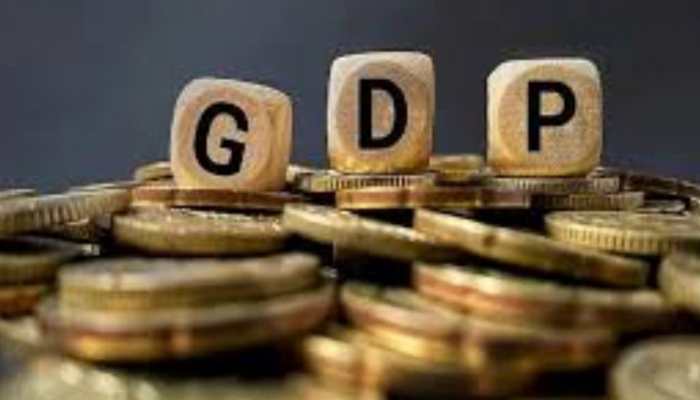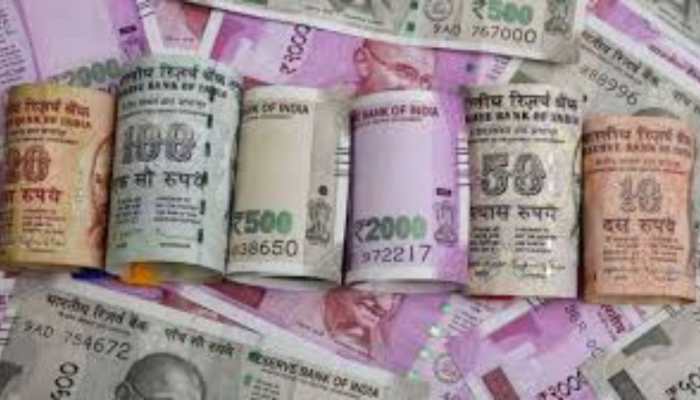GDP News
The Standard Chartered global outlook report expects India to clock steady GDP growth of 6.6 per cent in FY26 compared to 6.5 per cent in FY25. While strong macro fundamentals provide the cushion, the bank also flags that India is not immune to tariff risk and the outcome of trade talks with the US and the EU will be key to growth prospects.
GDP growth accelerated to 7.4 per cent on-year in the fourth quarter of last fiscal from 6.4 per cent in the previous quarter. Overall, GDP grew 6.5 per cent last fiscal (FY25).
From ranking 11th in 2013–14, India has positioned itself to become the fourth-largest economy. Even as India has surpassed many countries in terms of the size of its economy over the past decade, per capita income remains very low.
In the broader economy, labour cost growth for major IT firms has slowed significantly — from a peak of 26 per cent in Q3 FY23 to just 4 per cent in Q3 FY25 — highlighting a broader trend of cost rationalisation in the corporate sector, according to the report.
Meanwhile, the Reserve Bank of India (RBI) on Friday approved its highest ever dividend of a staggering Rs 2.69 lakh crore to the Narendra Modi government.
The official GDP growth data for the January-March quarter was also released today. The economy grew 7.4 per cent during the quarter.
Traffic Fines In India: According to the Road Transport Ministry, 1,68,491 people died in 2022 due to traffic violations, contributing significantly to accidental deaths in India.
Against the backdrop of trade-related uncertainty triggered by the US tariffs, India’s investment activity showcased a mixed trend in Q4 FY2025.
However, any geopolitical conflict and global tariff imposition can have an adverse impact on this optimism, it points out.
Bank credit to GDP during the period has remained relatively stable at 55 per cent over the past decade.
Trump’s reciprocal tariffs triggered a massive sell-off across Wall Street, with the Dow Jones plunging over 2,000 points, the S&P 500 witnessing its worst two-day sell-off since March 2020, and the Nasdaq entering bear market territory.
The IMF data also highlighted that the GDP per capita, which measures the average income of a citizen based on the total economic output, is estimated at USD 11,940 (or 11.94 thousand international dollars in terms of purchasing power parity).
The Minister highlighted that the growth rate surpasses major global economies like the United States, China, Germany, the United Kingdom, and France.
The report highlighted that India was only the 13th largest participant in international trade in 2024, but its trade volume grew at a 5.2 per cent compound annual rate from 2019 to 2024, while global trade grew at only a 2.0 per cent rate.
Earlier in the day, referring to the IMF data, BJP leader Amit Malviya posted on the micro-blogging site X that India has reached a remarkable economic milestone, doubling its GDP from USD 2.1 trillion in 2015 to an impressive USD 4.3 trillion in 2025.
World’s Top 10 Super-Billionaires: In an era where billionaires are no longer a rarity, a new financial elite has emerged—the super-billionaires. According to Altrata, only 24 individuals worldwide fall into this exclusive category, yet they control a staggering 16% of all billionaire wealth, a sharp increase from just 4% in 2014.
Their collective net worth reaches $3.3 trillion, rivaling the GDP of France. As defined by The Wall Street Journal, super-billionaires are those with a net worth of $50 billion or more. At the top of the list is Elon Musk, the world's richest person, with a fortune of $419.4 billion. Here’s a look at the world’s top 10 super-billionaires and their net worth.
India GDP Growth: The central bank’s recent liquidity-easing measures and easier regulations for non-banking financial companies are expected to transmit the benefits from an easier monetary policy to the broader economy, it added.
For the current fiscal, while Q1 numbers have been revised downward by 13 bps to 6.5 per cent, Q2 numbers stand revised upward by 22 bps to 5.6 per cent.
The government has supported more than 47 patents across textile value chain, which needs to be commercialised.
For FY26, the government has targeted a 7.4 per cent increase in capex, signaling a commitment to investment in infrastructure while continuing to reduce subsidy allocations.
Loading...



)
)
)
)
)
)
)
)
)
)
)
)
)
)
)
)
)
)
)
)
)
)
)
)
)
)
)
)
)
)
